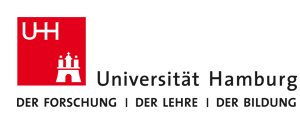64-850-P1 Masterproject Intelligent Robotics (Part 1)
| Room: | F-326 (TAMS Robot Lab) |
| Date: | Thursday, 12:15 - 15:45 |
| Organizer: | Michael Görner, Norman Hendrich |
Robotics Project
Within this project, you will gain hands-on knowledge about robotics, and likely also about recent progress in artificial intelligence and machine learning. In the winter semester, the project is made up of two courses, namely the actual robotics design and programming part (this course) and the accompanying integrated seminar 64-850-S: Integrated Seminar Intelligent Robotics. You need to attend and complete both parts for the overall project.
As we use the ROS (Robot Operating System) middleware on all our robots, the first few weeks of the course are spent on a hands-on introduction about ROS and our robots. In parallel to working on this, you are encouraged to find ideas for a concrete robot scenario to be designed by you and your fellow students within the second half of the wintersemester (and then continued in the following summer semester).
Appointments
The following schedule is tentative and will be updated according to the participants' previous knowledge and interests.- 19.10.2023:
- 26.10.2023:
- Assignment #2 (Turtlebot + Navigation) [PDF] / turtlebot.rosinstall
- 02.11.2023:
- Assignment #3 (Robot Arm + Moveit) [PDF]
- Project Brainstorming
- 09.11.2023:
- Assignment #4 (ROS Services + Collaboration) [PDF]
- Project Brainstorming
- 16.11.2023:
- Seminar Presentation Tom Sanitz - Object Pose Estimation [PDF] (7 MB)
- Project Brainstorming
- Literature research
- 23.11.2023:
- Project Brainstorming
- Literature research
- 30.11.2023:
- Project Exposé
- 07.12.2023:
- Seminar Presentation Jonas Thäder - Dreamer/Dreaming [PDF] (9 MB)
- Project
- 14.12.2023:
- Seminar Presentation Lukas Sommerhalder - Learning to Grasp through Self-Supervision [PDF] (1.4 MB)
- Project
- 21.12.2023:
- Seminar Presentation Hantao Zhou - Language to Rewards for Robotic Skill Synthesis [PDF] (4.5 MB)
- Project
- 28.12.2023: X-mas holidays
- 04.01.2024: X-mas holidays
- 11.01.2024:
- Seminar Presentation Jonas Thäder - TossingBot [PDF] (15 MB)
- Project
- 18.01.2024:
- Seminar Presentation Lukas Sommerhalder - Learning to Play Minigolf [PDF] (2 MB)
- Project
- 25.01.2024:
- 02.02.2024:
- Project
- Milestone First Year
Tasks to be worked on in the project involve:
- Practical software development (cmake, catkin, Python and C++)
- Hands-on knowledge of robotics (e.g. UR5, PR2)
- ROS basics (incl. simulation, TurtleBot, navigation)
- Data visualization (RViz, Markers, plotjuggler, etc.)
- Image / Depth image processing (e.g. OpenCV, PCL)
- Robot Control (e.g. ros_control, MoveIt)
- Control Architectures (e.g. SMACH, BehaviorTrees)
- Debugging and testing (incl. rosbag)
Content
Within this project you shall learn how to basically program a robot to do tasks like navigating, manipulating, interfacing with humans. Therefore ROS (robot operating system) as the standard open-source middle-ware will be used to program the robot.
Prerequisites:
Experiences in programming C/C++ and/or PythonLanguage:
English and GermanStart:
Yearly starting in winter term.Keywords:
Computergrafik, 3D, Robotik. Mensch-Maschine-Interaktion, Bildverarbeitung, Locomotion, Sensortechnik, Manipulation, Grasping, computer graphics, robotics, human-machine interface, image processing, sensor fusion, localization, navigation, gesture recognitionLearning goal
The goal of the Master project is basically two-fold. First, you get hands-on knowledge about various methods and approaches from different aspects of state-of-the-art robotics. Second, you learn about how to organize work and how to collaborate in a group towards your self-defined project goal.Approach
You will be working as a group towards a specific robot application (demo) proposed and chosen by the students. The Master project runs over two semesters. In the winter semester (WS 2023), the project consists of two parts with individual STiNE numbers (64-580-P1 for the practical robot work and 64-580-S1 for the seminar part). The Master-project will be continued in the following summer term (4 SWS, no seminar part).
Successful participation includes literature review, self-acquiring of basic methods and concepts, development and tests of (robot) software, implementation of a prototype, presentation and documention of the results.
All reports including an oral presentation in the first semester will take place in the integrated seminar 64-850-S1.
Evaluation
To pass the course, students have to- successfully pass the seminar component (with graded presentations/seminar paper),
- contribute to the final robotic demonstration,
- take part in a final public project presentation, which includes the demonstration of the developed system,
- contribute sections to the final written submissions composed by the group at the end of the term (see next section).
Written Submissions
At the end of the project, the group has to document their efforts. This work is split in two parts.
First, all final source code and project structure that was developed during the project should be documented. The aim of this part is to enable a person with no affiliations to the project to run and develop on top of the final demonstration. Useful documentation includes a technical overview of each part (usually in the form of a README.md for each component) with sufficient instructions to start and develop the demonstration scenario. If there are known issues that can break demonstrations, these should be documented as well. Lastly, the actual source code should be sufficiently structured and commented to be accessible later on.
Second, all other aspects of the project should be summarized by the whole group in a document in the style of an IEEE conference publication of 6-10 pages in total. It should comprise everything you would expect to see in a scientific publication while abstracting away implementation details (which are documented in the first part already). Relevant sections might include
- Overall scope and structure of the developed system
- Related work of the system and the individual components
- Methods and considered alternatives for implemented components
- Limitations of the chosen approaches
- If experiments were performed, a conclusive evaluation of the observed effects.

